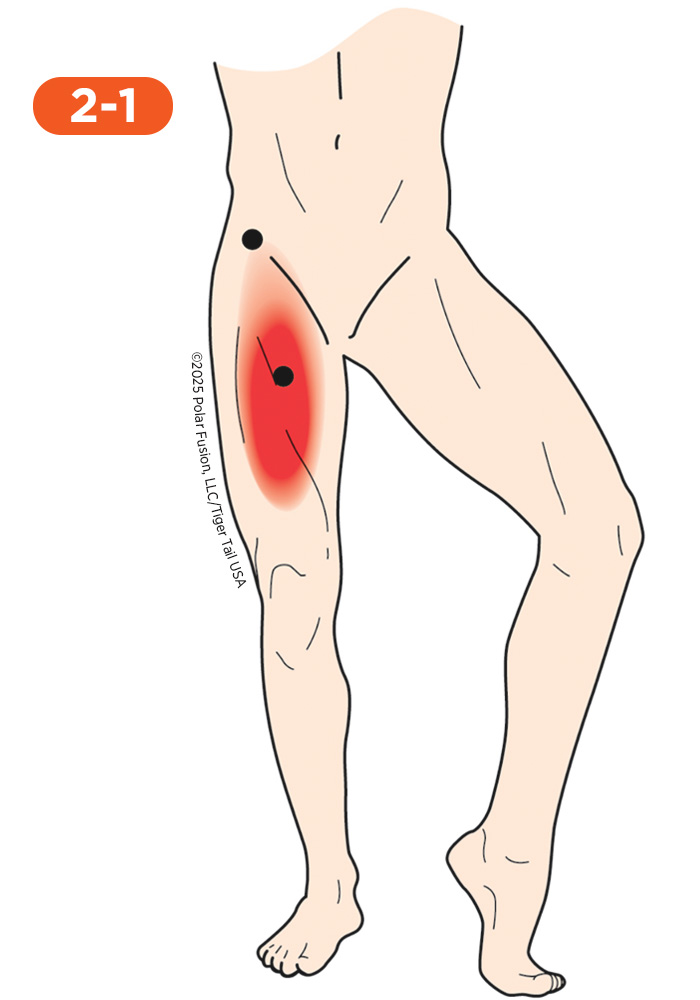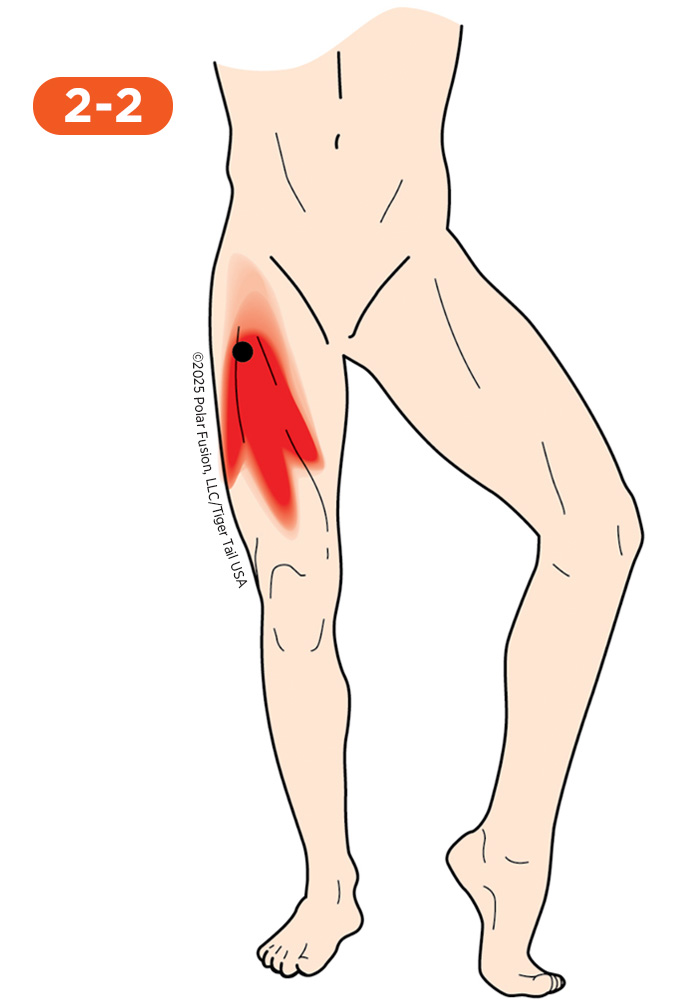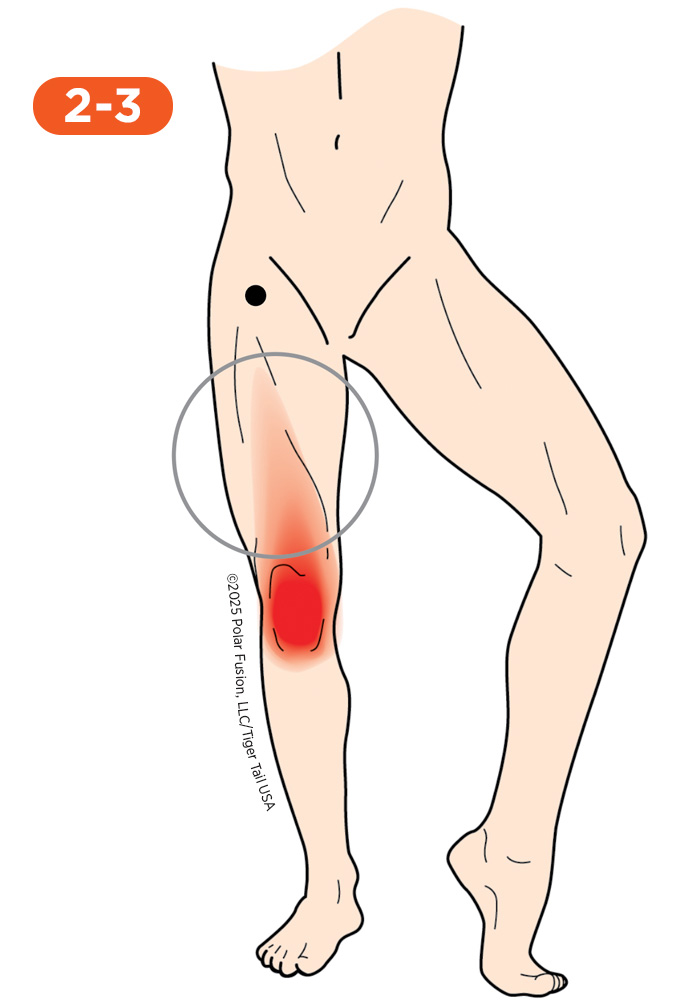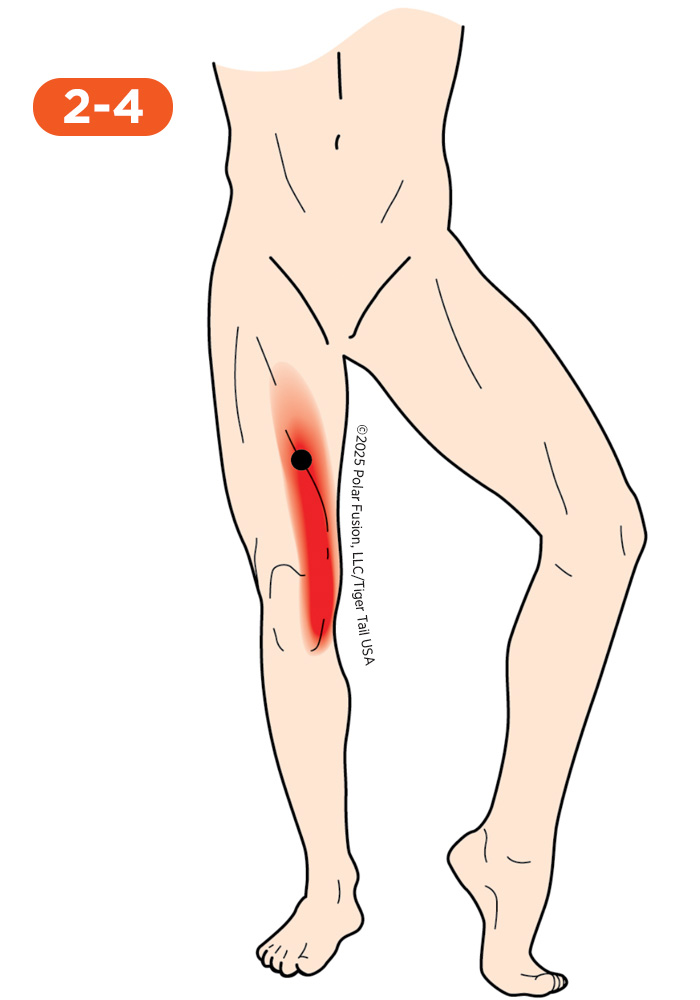Quadriceps Pain

Causes
Heavy lifting: Lifting objects that are too heavy can place immense strain on the musculoskeletal system, particularly the back and joints. This can lead to acute injuries like muscle strains, disc herniations, or ligament sprains if proper form is not maintained or the load exceeds the body’s capacity.
Sitting with one leg crossed over the other for extended periods of time: This posture can put uneven pressure on the hips and lower back, potentially leading to muscle imbalances and nerve compression. Over time, it may contribute to poor circulation in the crossed leg and exacerbate conditions like sciatica or hip pain.
Over exercising: Engaging in physical activity beyond the body’s capacity for recovery can result in chronic fatigue, muscle damage, and increased susceptibility to injury. This often manifests as persistent soreness, performance plateaus, or stress fractures due to inadequate rest and recuperation time.
Hyperpronation: This describes an excessive inward rolling of the foot during walking or running. Over time, hyperpronation can contribute to pain and injury in the ankles, shins, knees, and even hips due to misalignment of the skeletal and muscular system.
Front of Thigh Pain

I Feel
Deep Ache in the Front of the Thigh
That mysterious deep ache in the front of your thigh is often referred pain coming from muscle knots in your hip flexor muscle, the iliopsoas. The discomfort usually focuses deep within the upper front of the hip, presenting as a deep, pulsing ache that sometimes runs along the inner top of your thigh. You’ll find the pain gets worse when you’re doing activities that shorten the muscle, like sitting for long periods, walking upstairs or inclines, or even doing leg raises. Because the iliopsoas is so fundamental to hip movement, its knots can easily mimic deeper problems, such as hip joint arthritis or a labral tear. The front of the hip crease is often susceptible to pressure, and the muscle leaves your hip and thigh feeling tight and restricted, limiting your ability to straighten your leg when you walk.

I Feel
Pain Climbing Stair
When climbing stairs feels like a real struggle, the source might be muscle knots in the deepest thigh muscle, the vastus intermedius. The discomfort usually focuses deep under the other quad muscles, presenting as a deep, internal ache that runs straight down the middle of your thigh bone. You’ll find the pain gets worse when you’re doing activities like climbing stairs, running uphill, or standing up quickly from a low chair. Because this muscle helps to extend the leg, its muscle knots can easily mimic deeper problems, such as bone stress or severe joint strain.
Aching Thighs
If you have persistent, overall aching thighs that never seem to relax, one of the causes is often the deep muscle knots in one of the thigh muscles, the vastus intermedius. The discomfort usually focuses deep in the center of the thigh, presenting as a pervasive, heavy ache that makes your whole leg feel fatigued. You’ll find the pain gets worse when you’re doing weight-bearing activities like standing for long periods, walking for a distance, or even just lying in bed at night. That deep, central thigh tissue is often extremely sensitive to pressure, and the muscle leaves your entire thigh feeling tight and heavy, as if it’s constantly bearing too much weight.

I Feel
Aching Thighs
Aching pain in the front of the thigh can be a real bother, and sometimes the cause is those stubborn muscle knots in the long, central quad muscle, the rectus femoris. The discomfort usually focuses across the mid-thigh, presenting as a deep, nagging ache that can run along the front of your thigh and into the hip crease. You’ll notice the pain gets worse when you’re doing activities that stretch the front of the hip and knee, like standing tall after sitting for a while, deep lunges, or even just kicking your leg forward quickly. Because this muscle crosses two joints, its knots can easily mimic deeper problems, such as hip flexor strain or tendinopathy near the kneecap.

I Feel
Buckling
When your thigh feels like it’s buckling or giving out, the culprit is often the tightness and weakness caused by muscle knots in your inner quad —the vastus medialis oblique (VMO). The instability usually starts with a sharp, intense pinch deep in the inner thigh, just above the knee, making you feel like the knee joint is shifting. You’ll notice the pain and buckling get significantly worse when you’re doing activities like going downstairs, stepping off a curb, or pivoting quickly. Because the VMO is the primary muscle that stabilizes your kneecap, its knotting can easily mimic deeper joint instability or ligament issues. That spot above your inner knee is often susceptible to pressure, and the muscle leaves your inner thigh feeling unstable and restricted whenever you put weight on it.
